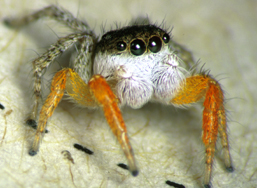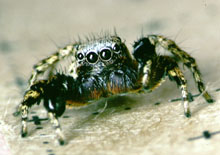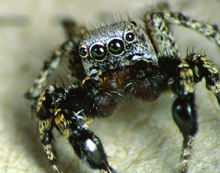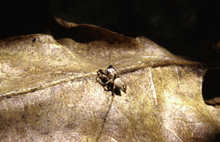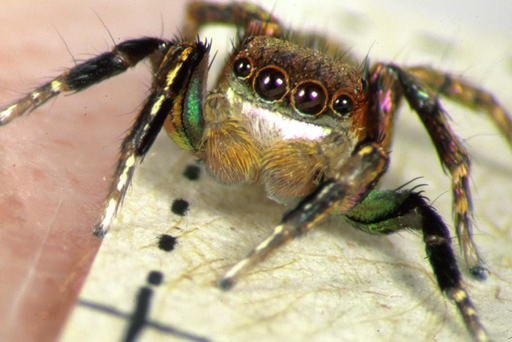
Four species are included here in a "miscellaneous" Habronattus category, as they have no known close evolutionary relationship either amongst themselves, or with other Habronattus. The unique morphological and ecological characteristics of each of these species is highlighted below.
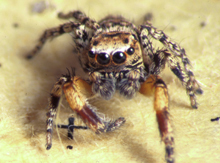
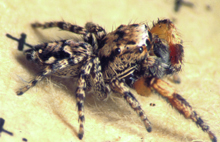
H. geronimoi - A species of southern AZ and northern mainland Mexico, with a single record from Mulege, BCS. Like other members of the H. paratus group (called the H. dorotheae group by Griswold), H. geronimoi is typically found in rather shaded habitats, usually in association with solid leaf litter. The species is characterized by a unique abdominal pattern, also having rather long first legs with a red-brown tibia.
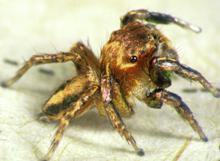
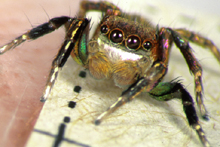
H. hallani - A strikingly beautiful little Habronattus species. Adult males have portions of both first and second legs concave and covered with iridescent scales reflecting various greens and pinks. The area beneath the principal eyes (the clypeus) is similarly iridescent, but differs in being gold to copperish in color. Populations from near San Diego are almost entirely covered with copperish iridescent scales (above). A species of the southwest U.S., populations are found across southern California and northern Baja. These spiders have an interesting, but difficult to characterize, natural history. They are most-often collected near water, but are never found in high numbers. The individual pictured above was collected inside a house (backyards can also be decent habitats).
